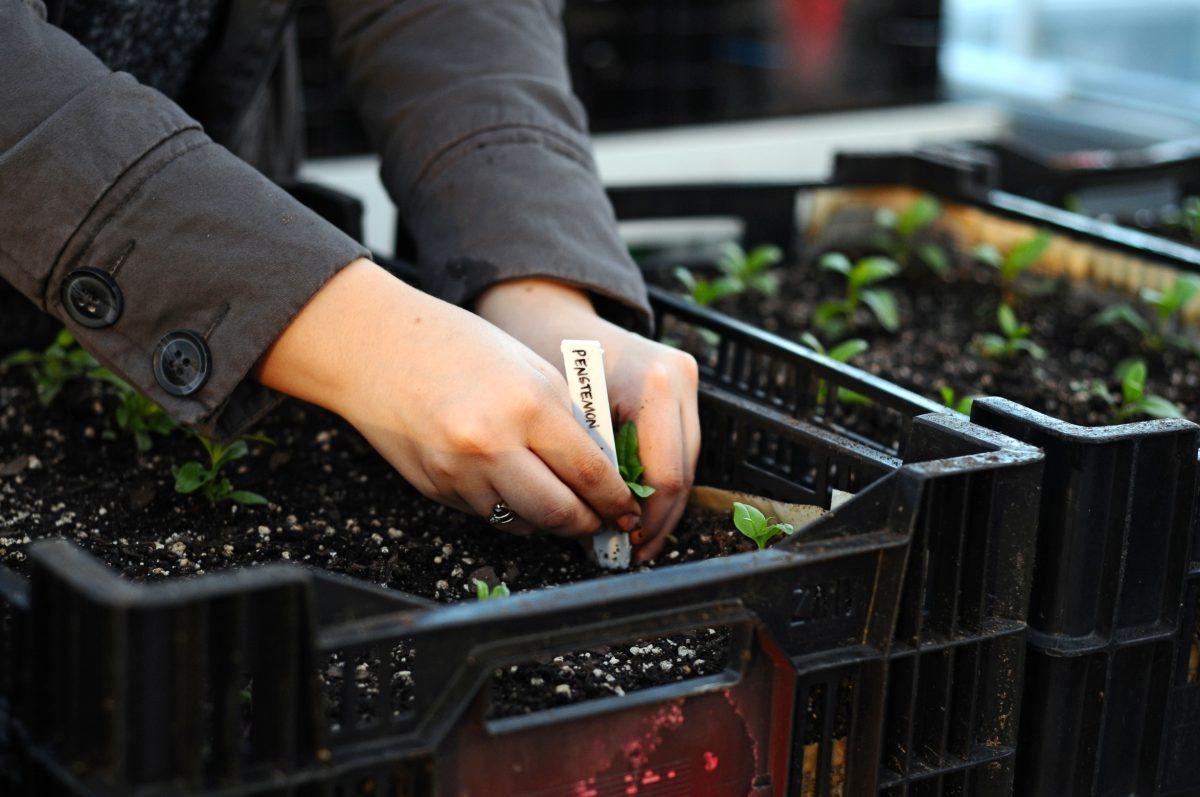
In a washed-out green trailer that sits a few acres behind the J.C. Raulston Arboretum, it’s an average evening in an average house.
The overhead lights are on. The temperature is set to 70 degrees Fahrenheit. Erin Regan, a 2008 graduate, stands by her desk that she has personalized with a picture of her boyfriend. Red, orange and yellow flowers float in glass mason jars on the tables.
But it’s this last feature that immediately separates the trailer’s atmosphere from any other house. Flowers don’t just adorn the tables; they overwhelm the tables.
The trailer, actually a workspace located in N.C. State’s Horticulture Field Laboratory, is where flowers grown in the HFL come to bloom. It’s where Emma Locke, a doctorate student in horticulture, completes the last leg of her research on this season’s L.A. lilies — a hybrid of Asiatic and Easter lilies — and sunflowers.
The trailer’s conditions need to mimic those of an average house so floraculture researchers can measure their flowers’ vase lives — or how long a particular cut flower can live in a vase until the average person throws it out.
“You’ll always have the experience of getting the rose that tilts over after three days. These flowers,” Regan said, motioning to the table of Red Alert and orange lilies, “will hopefully help with that.”
Locke is working on a research project that attempts to correlate the relationship between a flower’s amount of carbohydrates and its vase life.
“I’m looking at the effects of temperature and light and their interaction on the vase life of cut lilies and cut sunflowers and how those affect carbohydrates,” Locke said.
She’s three years into the experiment, in which she has used the same flowers, and said she goes through her results each year to “tweak the production to make it work — to find out what went wrong.”
“Last year I did the experiment on the other side of the greenhouse,” Locke said. “In the winter, the sun comes in through the south. … They really needed more sun than they were getting.”
So Locke, who spent time Wednesday evening maneuvering a garden hose around long tables to water her lilies, moved the flowers to the other side of the greenhouse this year. Lilies grow best in areas of cool temperature and high light — a condition that is hard to come by in greenhouses.
“To let it cool in the greenhouse, you have to let it shade,” she said. Shade in greenhouses comes from both the building’s natural orientation to the sun and from automatic, man-made shades that loudly and creakily raise themselves according to which parts of the greenhouse need more sunlight.
Sunlight plays a role in determining how many carbohydrates a flower has because photosynthesis causes a plant to accumulate carbohydrates. High temperatures, however, increase the rate of respiration and, at the same time, cause plants to break down carbohydrates.
“The thought behind this is that photosynthesis and respiration rates both increase as temperatures increase,” she said.
So this natural process would be perfect for Locke’s theory (if a flower has high amounts of carbohydrates, its vase life will improve) if it were simple to amp up the amount of sunlight but cool down the temperature.
But it’s not. And that’s what she has to work around, and it’s part of the reason she has been working on the project for almost three years.
With each tweak in the plant’s production, she can monitor in what possible conditions the plants grow with high amounts of carbohydrates.
Once the plants she has finished watering for the day bloom, she will cut and treat them and take them to the trailer. Here, Regan will control the settings — lights are on for 12 hours, the humidity stays between 40 to 60 grams per meter — and wait, essentially, for the plants to wilt.
Before she became a research technician, Regan worked with roses that were flown in from outside of the United States.
“I did roses, tons of roses,” she said. “I only got red, only because they’re most popular.”
She is one of the students J.C. Raulston, a former professor, envisioned when he started, in 1976, the arboretum that neighbors Regan’s office.
“We’re here for the students,” Chris Glenn, Programs and Education Coordinator for the arboretum, said. “This is a living laboratory for students.”
Glenn said classes that work mainly in the HFL frequent the arboretum to cut plant stems that they can use to grow clones.
Helen Kraus, a lecturer of horticulture science, started using the HFL seven years ago. Many of her class trips to the arboretum end, she said, with students choosing plants to clone and then raise.
“Every class starts with some seeds, every class starts with some cuttings,” she said. “At the same time, they’re taking care of mature plants.”
She said she started taking classes to the HFL and the arboretum when she noticed her students “weren’t feeling confident because they were learning the textbook side of it but they hadn’t actually done it.”
“When they do something by hand, then they’re more confident with it,” she said. “They feel more comfortable in their abilities to do it rather than just kind of learning about it.”